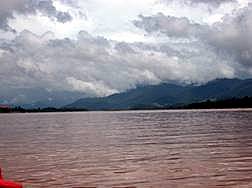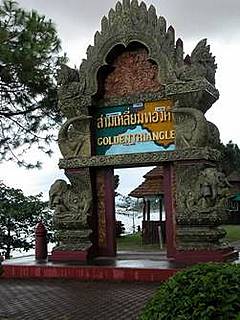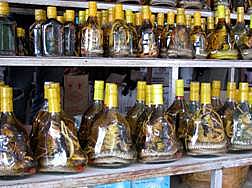Santiniketan is a small town near Bolpur in the Birbhum district of West Bengal, India, and approximately 180 kilometres north of Kolkata (formerly Calcutta). It was made famous by Nobel Laureate Rabindranath Tagore, whose vision became what is now a university town (Visva-Bharati University ) that attracts thousands of visitors each year. Santiniketan is a tourist attraction also because Rabindranath lived here and penned many of his literary classics (namely Tagore songs, poems, novels etc.) and his home is a place of historical importance.
Santiniketan means “abode of peace”. In 1863, a meditation centre was founded at Santiniketan by Maharshi Debendranath Tagore, the father of the world famous Bengali poet Rabindranath Tagore. He had established the Brahmo Vidyalaya and in 1901 another open-air laboratory school. In 1921, it had expanded into Visva-Bharati University.
Visva-Bharati is a residential university with International body, hostels and extensive grounds. It includes separate colleges for fine arts and crafts, dance, music, teachers training, Asian Languages, technology, post graduate studies and research. “Rabindra-Sadhana” is the university’s museum and the centre for the study of Tagore. There is another institution for rural reconstruction, health, social welfare, and the revival of the folk arts at Sriniketan, which is very close to Santiniketan.
This institution also founded by Tagore in 1922. On your visit to Santiniketan you will notice yourself drawn to a place called the ashram that comprises all that Kabi Guru (Lord of Poets) Rabindranath Tagore had established. Santiniketan is the embodiment of serenity and peace, far removed from the concrete jungle. Here imposing sculptures of Ram Kinkar greet you at every turn of the road. Paintings of Nandalal, Abanindranath and Binod Bihari captivate your senses. Uttarayan is the complex where Rabindranath lived, has a museum and art gallery.
Visva Bharati University is the University at Santiniketan, 2 km from the nearest railway station Bolpur, is now a centre of international studies and culture. The university is also open to visitors. Sriniketan, a centre for traditional handicrafts like batik (on leather, cloth and silk), pottery, weaving kantha embroidery and dokra tribal handicrafts is situated three kilometres from Santiniketan. The Ashram area represents the encouragement and belief of Tagore even though it seems overshadowed by the university.
A visitor usually takes cycle rickshaw rides in and around the area. What would draw your attention would be boards that say Heritage Complex. Although the saddened state of the buildings do not have the basic paint jobs done and doesn’t fit with the image of a heritage complex, you would not really mind it. There are plenty of places to stay in Santiniketan. On reaching there, be sure to ask any of the locals. People all over Bengal are known for giving good directions. Long live Santiniketan, long live Tagore.
About the author: Arjun Mukherjee is a song writer and a musician who loves to travel and photography is also his hobby. His website can be found at : www.arjun.in and Arjun can be contacted by e-mail: arjun@123linux.com

 Mac has not been very well but is still e-mailing strong. Here is an account by Paul Haring, a US journalist writing about Mac’s exploits during WW2. The article is entitled: The ‘Greatest Generation.’
Mac has not been very well but is still e-mailing strong. Here is an account by Paul Haring, a US journalist writing about Mac’s exploits during WW2. The article is entitled: The ‘Greatest Generation.’  – see picture right of the Mekhong which shows Laos to the right, Burma to the left and Thailand behind.
– see picture right of the Mekhong which shows Laos to the right, Burma to the left and Thailand behind.  Now, the main thing to do in the Golden Triangle area is to take a boat down the Mekhong (see photo above.) There are oodles of long tail boats are available for hire here and you get to wear a life jacket. Cruising up and down the Mekong River allows visitors a glimpse of village life in the many riverside settlements – particularly in Laos where you can step off and for 15 baht visit a small market which sells bootleg cigarettes, snakes inexplicably coiled in whisky jars (see photo below right) and various items of clothing. Technically you are in
Now, the main thing to do in the Golden Triangle area is to take a boat down the Mekhong (see photo above.) There are oodles of long tail boats are available for hire here and you get to wear a life jacket. Cruising up and down the Mekong River allows visitors a glimpse of village life in the many riverside settlements – particularly in Laos where you can step off and for 15 baht visit a small market which sells bootleg cigarettes, snakes inexplicably coiled in whisky jars (see photo below right) and various items of clothing. Technically you are in 
 Mae Sai (or Maesai) is the northern most district of
Mae Sai (or Maesai) is the northern most district of